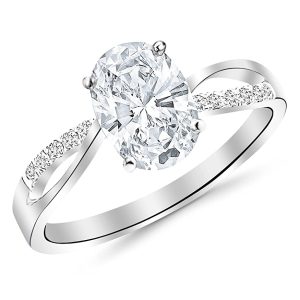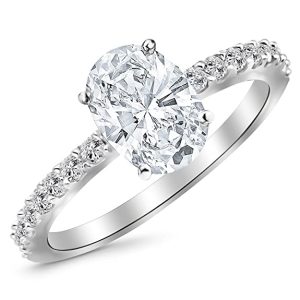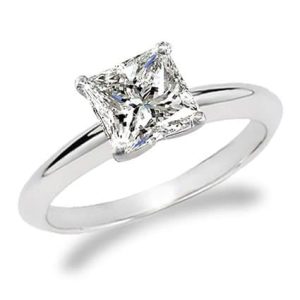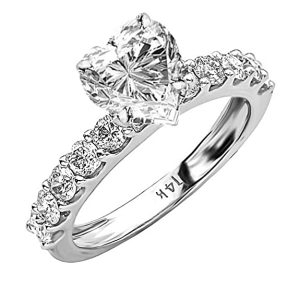What are SI1 diamonds?
Diamonds are the hardest mineral in the world, so they are resilient, enduring and never grow old. Each diamond is very special as it is unique- just like human fingerprints. As an expert from the Diamond Producers Association explains, “While brilliant polished diamonds may look similar to the naked eye, every diamond is unique on the inside. Each has its own birthmarks, its own growth patterns and its own personality”.
What does the grade SI1 mean?
The grade SI1 means that the diamond is “slightly included”. Inclusions can affect the clarity of the diamond and are always noticeable under 10X magnification, by a trained gemologist. Sometimes, a diamond in this grade can have an inclusion that is visible to the naked eye, but this is uncommon.

Many jewelers believe that this quality diamond is a good choice as the price is good and so is the quality. If you look at the price difference between SI1 diamonds and the higher grade VS diamonds, there is a big difference! If you choose your diamond carefully you can get a really beautiful stone for your money.
Read Also: What are SI Diamonds? Is there a Difference Between SI1 and SI2 Diamonds?
SI Diamonds for Engagement Rings
10% of all the SI1 diamonds in the world are used in engagement rings. Diamonds are the most popular of all the gemstones and have long been the symbol of eternal love. The Ancient Greeks believed they were made from tears shed by the gods or were splinters from the stars. Diamonds are seen as the perfect way to mark a personal commitment and are the favorite stones for engagement rings. The first time a diamond engagement ring was ever used for a proposal of marriage was in the 15th century.

Diamonds are one of the wonders of nature, formed many miles underground,1- 3.5 billion years ago. Diamonds are valuable, not only financially but also emotionally, as they mark a very special moment in a person’s life. As well as being used for beautiful engagement and eternity rings, diamonds are also used for other pieces of stunning jewelry.
Read Also: Why Diamond Rings Are Used For Engagement
How are diamonds graded?
All diamonds look beautiful as they reflect the light and sparkle, but they do come in a variety of carats (size), cut, color and clarity and each stone is graded, using these “4C’s”.
The first grading system was introduced in1952 and had nine different grades for the quality of a diamond, with the top grade being “flawless” and grades 11 and I2 at the other end of the scale and denoting imperfect diamonds. This grading system was revised in the 1970s and 12 grades were introduced.

Today, these grades are used worldwide by the top diamond graders such as the Gemological Institute of America (GIA), the American Gemological Society (AGS), the International Gemological Institute (IGI) and the European Gemological Laboratory (EGL) as well as many smaller grading laboratories.
Are there different types of inclusions?
The most common inclusions found in diamonds include crystal, feather, indented natural needle and clouds. It is best to choose a diamond that does not have a cloud or single large inclusion. Look for stones where the inclusion is positioned on the side of the diamond near the girdle, as this part will be led in a claw setting on a ring and not be on the top surface. It is worth remembering that the larger the diamond, the larger the inclusion can look and this is particularly true in diamonds of more than one carat.
A “cloud” in a diamond is like a series of minute pinpricks within the stone. Light cannot pass through the cloud so cannot reflect back so the diamond appears dull and looking at the stone closely, it can appear cloudy or even hazy. Having said this, the diamonds can still be placed in clever settings to maximize their clarity.
Another common type of inclusion is “crystal”. These are formed naturally within the diamond as it is developing. The crystals are often black in color and as they are such a dark color, they are sometimes visible to the eye (without being magnified) and can detract from the beauty of the stone. There are inclusions that are often truly minute and do not impact the brilliance of the diamond. These inclusions include feathers and twinning wisps (two very fine lines).
SI1 diamond cost
The price of your chosen diamond will still be based on the three other C’s too – carat weight, cut and color. The highest quality diamonds are totally colorless and lower quality stones have a pale yellow hue.

The cut of the diamond is another important consideration and is even more so if the stone has a slight inclusion. A skilled diamond cutter will cut the stone so that the impact of its inclusion is totally minimized.
So you want to buy a SI1 diamond?
If after careful consideration you have decided that you would really like to buy a beautiful SI1 diamond, here are some important steps to follow:-
- Choose a good jeweler – preferably one who specializes in diamonds and can show you a good range of stones. Take your time to examine each stone carefully and to understand what slight inclusion it has and how well it has been cut.
- Make sure your chosen diamond has been certified by one of the top laboratories such as the GIA , AGS, IGI, and EGL as these are these laboratories have the best grading system. You need to know exactly what quality stone you are buying. A diamond that is given a SI1 grading by a smaller laboratory and is at a surprisingly cheap price, might only be given a lower grade such as an I1 by one of these top laboratories.If your chosen diamond has not been certified, it is essential that this is done and the process with any of the top laboratories will take 3-4 weeks.
- How a diamond has been cut is very important. Clarity and brilliance are two separate qualities in a diamond. If your SI1 diamond has really good clarity, but has been poorly cut, the diamond will look dull and lifeless – and the inclusion could appear larger. Cut can really enhance the beauty of the stone and because of this, the diamond will command a higher price.
- Color is another consideration. It is worth remembering that a more flawless stone with a lower color grade will not look as good as a more colorless stone with a lower grade of clarity – such as an SI1.
At the end of the day, choose the diamond that you are happiest with and understand exactly what grade stone you are buying to ensure you pay a fair price. After that relax, happy in the knowledge that the recipient will consider it to be the best diamond in the world.




